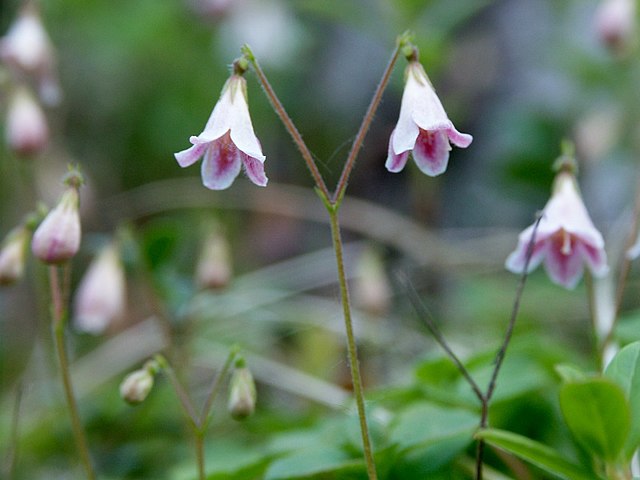Loading AI tools
Short woody plant From Wikipedia, the free encyclopedia
A subshrub (Latin suffrutex) or undershrub is either a small shrub (e.g. prostrate shrubs) or a perennial that is largely herbaceous but slightly woody at the base (e.g. garden pink and florist's chrysanthemum).[1] The term is often interchangeable with "bush".[2]


Because the criteria are matters of degree (normally of height) rather than of kind, the definition of a subshrub is not sharply distinguishable from that of a shrub; examples of reasons for describing plants as subshrubs include ground-hugging stems or low growth habit. Subshrubs may be largely herbaceous though still classified as woody, with overwintering perennial woody growth much lower-growing than deciduous summer growth. Some plants described as subshrubs are only weakly woody and some persist for only a few years. Others, such as Oldenburgia paradoxa live indefinitely (though is still vulnerable to external effects), rooted in rocky cracks.
Small, low shrubs such as lavender, periwinkle, and thyme, and many shrub-like members of the family Ericaceae, such as cranberries and small species of Erica, are often classed as subshrubs.
A chamaephyte, subshrub or dwarf-shrub is a plant that bears hibernating buds on persistent shoots near the ground – usually woody plants with perennating buds borne close to the ground, usually less than 25 centimetres (9.8 in) above the soil surface. The significance of the closeness to the ground is that the buds remain within the soil surface layer and are thus somewhat protected from various adverse external influences. Accordingly, the chamaephyte habit is especially common in stressful environments, for example:
The term chamaephyte is most formally used within the context of Raunkiær plant life-forms' classification. Examples of chamaephytes are many of the species living in the maquis shrubland and other plants of submediterranean dry ecosystems (species such as thyme, Thymus vulgaris, and rosemary, Salvia rosmarinus); others include heather species (e.g. Calluna vulgaris and Ericas), African wild olive (Olea europaea ssp. cuspidata) and edelweiss (Leontopodium alpinum). Chamaephytes also include cushion plants.[7]
Seamless Wikipedia browsing. On steroids.
Every time you click a link to Wikipedia, Wiktionary or Wikiquote in your browser's search results, it will show the modern Wikiwand interface.
Wikiwand extension is a five stars, simple, with minimum permission required to keep your browsing private, safe and transparent.